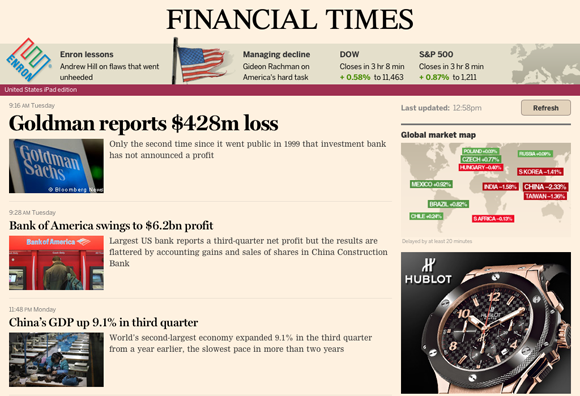Mobile web apps are mostly defined by their “if onlys” — if only they had the feel of native apps, if only they could fully interact with devices, etc.
James Pearce, (@jamespearce), senior director of developer relations at Sencha, has a more optimistic take on mobile web apps. In the following interview, Pearce discusses promising web app technologies, and he explains why device APIs could make the web a lot more interesting. Pearce also weighs in on developers’ current concerns, such as backward web app compatibility and testing across devices.
Our interview follows.
What are the most promising mobile web app technologies?
 James Pearce: There are two significant technologies that I think we will see mature in the coming years. The first is WebGL, which provides a way for web developers to access the low-level graphic capabilities of the computer or device that the browser is running on. WebGL creates a huge opportunity to use web technologies to build games, to create high-performance simulations, and to develop other types of graphically heavy user interfaces — at least, when the browser supports it well. Currently, no default mobile smartphone browser offers good support, but I expect this to change soon.
James Pearce: There are two significant technologies that I think we will see mature in the coming years. The first is WebGL, which provides a way for web developers to access the low-level graphic capabilities of the computer or device that the browser is running on. WebGL creates a huge opportunity to use web technologies to build games, to create high-performance simulations, and to develop other types of graphically heavy user interfaces — at least, when the browser supports it well. Currently, no default mobile smartphone browser offers good support, but I expect this to change soon.
Device APIs are also important because they allow web applications within a
browser to query and interact with the device they’re running on. These are not being implemented quickly, for various reasons, but the mobile web will take a huge step forward when web applications can interface with a device in much the same way native applications can. Imagine the possibilities that would come about through granting web apps access to a device’s camera, contacts, calendar, messaging, and so on. The web will suddenly become a much more interesting place.
What are the best examples of HTML5 mobile apps? What lessons can and should be learned from them?
James Pearce: We have a directory at Sencha of some of the best examples, and this is just the tip of the iceberg. Of course there are some very well-known brands doing cool mobile things with web technology already — the Financial Times is a good example. We’re seeing a whole spectrum of different types of apps and companies deploying services and applications with these
tools and techniques.

Screenshot of the Financial Times web app
That said, it’s still very early days, and I’m not sure we’re ready to say we fully understand the best practices for building, deploying and promoting HTML5 web apps. But, certainly, we’re seeing a lot of creativity around user experiences, and developers are pushing the bounds of what mobile devices can do. I guess if there’s one thing we can learn, it is that the future is still very much up for grabs.
How much backward compatibility should mobile developers incorporate into their web apps?
James Pearce: This depends a lot on the type of app. If you are creating a relatively simple web application or site, then it’s a good idea to employ techniques that allow it to function on down-scale devices. Normally, this means starting with simple content or markup and progressively enhancing the application in response to the additional capabilities the browser contains.
For full-fledged web applications, this is not at all easy to do, and at some point you need to draw the line with regard to the
functionality the device must absolutely have in order to support your application’s purpose. For example, a photo-sharing application is almost no use on a device with no camera API. A location-based application is pretty useless if the device can’t determine its location and convey it to the browser, and so on.
What is the best way to test across devices without owning those devices?
James Pearce: That’s an eternal challenge in mobile. The Apple and BlackBerry emulator
tools are great. There’s also one in the Android SDK, though sadly, of lower fidelity right now. Services like DeviceAnywhere
allow you to remotely connect to devices — and Nokia runs a similar service — but ultimately, there’s no alternative to the real thing to truly judge how your app’s user experience shapes up.
 TOC NY 2012 — O’Reilly’s TOC Conference, being held Feb 13-15, 2012, in New York City, is where the publishing and tech industries converge. Practitioners and executives from both camps will share what they’ve learned and join together to navigate publishing’s ongoing transformation.
TOC NY 2012 — O’Reilly’s TOC Conference, being held Feb 13-15, 2012, in New York City, is where the publishing and tech industries converge. Practitioners and executives from both camps will share what they’ve learned and join together to navigate publishing’s ongoing transformation.
This interview was edited and condensed.
Related:
